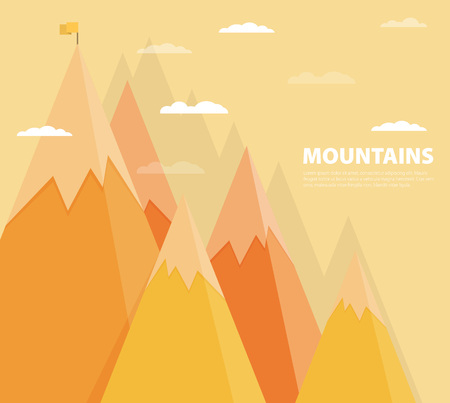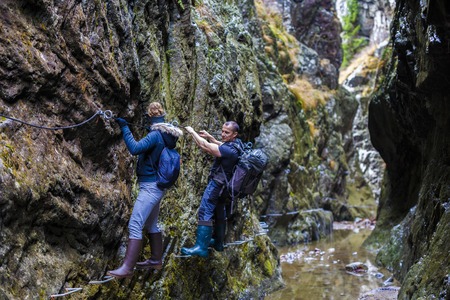1. Introduction: Why Trail Ratings Matter
For hikers across the United States, trail ratings serve as a compass, shaping every step of the journey before boots even hit the dirt. Whether you’re heading out for a sunrise summit in the Rockies, winding through dense Appalachian forests, or tackling the rugged coastline of the West, these ratings provide critical information about what to expect. They help outdoor enthusiasts gauge difficulty, prepare the right gear, and set realistic expectations for their adventure. More than just numbers or color codes, trail ratings reflect local terrain, climate, and culture—creating distinct outdoor experiences region by region. Understanding how different areas like the Rockies, Appalachians, and West Coast rate their trails not only helps hikers choose their next route but also deepens appreciation for the unique landscapes that make each region special.
2. Trail Rating Systems: A Visual Guide
If you’ve ever hit the trail in different corners of the U.S., you’ve probably noticed that not all trail ratings are created equal. Whether you’re climbing the jagged peaks of Colorado, winding through the misty hollows of the Appalachians, or traversing the Pacific bluffs, every region uses its own approach to rating hikes. Let’s break down what goes into these systems—so you’ll know exactly what “moderate” means whether you’re in Rocky Mountain National Park or deep in Oregon’s coastal forests.
Key Criteria for Trail Ratings
Trail rating systems typically revolve around four main factors: elevation gain, overall difficulty, terrain type, and accessibility. Here’s a quick look at how each element shapes your experience:
| Criteria | Description | Visual Example |
|---|---|---|
| Elevation Gain | The total climb from start to finish—Rockies trails might soar 3,000+ feet above valley floors, while Appalachian climbs tend to be steadier but lower in altitude. | Picture switchbacks zigzagging up a sunlit alpine ridge versus a steady green tunnel in Smoky Mountain fog. |
| Difficulty | A blend of distance, steepness, and technical challenges—expect rocky scrambles out West, rooty paths back East, and sandy inclines on the coast. | Imagine scrambling over boulders with snow patches in June or navigating slippery red clay after summer rain. |
| Terrain Type | The ground beneath your boots—loose shale and exposed rock in the Rockies, leafy loam in Appalachia, packed dirt or volcanic soil on the West Coast. | Contrast a rugged talus field with a moss-carpeted woodland path or a windswept bluff dotted with wildflowers. |
| Accessibility | How easy it is to get there and follow the route—think wide ADA-friendly trails near Seattle versus narrow backcountry tracks in Montana. | A paved riverside walk bustling with families versus an overgrown singletrack marked only by cairns and faded blazes. |
Regional Flavor: How Ratings Reflect Local Landscape
Each region leans into its landscape when rating trails. In the Rockies, elevation gain often dominates ratings—“strenuous” usually means long climbs at high altitudes. In the Appalachians, trail ratings consider relentless up-and-downs (even if peaks are lower), plus muddy conditions and dense forest cover. On the West Coast, trails factor in rapid weather changes and unique surfaces like coastal sand or volcanic ash.
Vivid Examples Across America’s Trails
Imagine standing at a Rocky Mountain trailhead as golden light spills over distant peaks—the sign says “difficult,” promising thin air and panoramic vistas. In Shenandoah or Great Smoky Mountains National Park, “moderate” might mean a meandering path lined with rhododendron tunnels and hidden waterfalls. Out west near Big Sur or Mount Rainier, “easy” could still include dramatic elevation changes—but on smooth paths with ocean views or old-growth forests arching overhead.
Navigating Trail Ratings Like a Local
No matter where you roam, knowing these rating criteria helps you pick your perfect adventure—and avoid surprises! Always check local guidebooks or park websites for details; regional variations can make all the difference between a casual stroll and a mountain marathon.

3. The Rockies: Rugged Paths and High Standards
In the Rockies, trail ratings are as much a reflection of local pride as they are a navigation tool. Here, the vast mountainscapes stretch into the sky, and trails often snake through high-altitude passes, rocky switchbacks, and unpredictable weather patterns. Hikers in this region expect intensity: steep ascents, loose shale underfoot, and dramatic elevation gains are par for the course. Trail ratings throughout the Rockies are notably conservative—a “moderate” trail here might feel like a strenuous climb elsewhere in the U.S. This is due to both the raw geography and the strong outdoor ethos among locals, who value resilience, preparedness, and self-sufficiency. While some routes are marked with detailed signage and mileposts, many remain minimally maintained, relying on hikers’ skills to navigate changing conditions. As a result, trail difficulty ratings in the Rockies account for not just distance or grade, but also exposure, remoteness, and rapid weather shifts. If you’re hiking here, be prepared for honest ratings that favor challenge over comfort—each label is earned by the landscape’s untamed character.
4. The Appalachians: Historical Paths, Community Focus
Stepping onto a trail in the Appalachians is like walking through a living archive. Trail ratings here are shaped not only by terrain but by deep-rooted tradition and the strong sense of local community. Unlike the West Coasts focus on technical features or the Rockies’ emphasis on elevation and exposure, Appalachian trails are often rated with historical context and accessibility at their core.
Emphasis on Tradition
The Appalachian region is home to some of America’s oldest footpaths, including iconic stretches of the Appalachian Trail (AT). Ratings often reference historical waypoints—old shelters, Civil War relics, or ancient forests—giving hikers a sense of journeying through time. Local trail clubs maintain these paths with respect for original routes, sometimes preserving rugged sections that might be rerouted elsewhere. This approach honors the legacy of generations who have hiked before, making tradition an integral part of how difficulty and appeal are measured.
Community Accessibility
Trail ratings in the Appalachians prioritize inclusivity. Because many communities border or even rely on these trails, accessibility takes center stage. Trails are commonly rated for suitability across age groups and ability levels. Many local rating systems include details on parking, proximity to towns, and family-friendly loops—features rarely highlighted out west.
| Trail Feature | Appalachian Rating Emphasis | Rockies/West Coast Comparison |
|---|---|---|
| Historical Context | High (milestones, heritage sites) | Low to Moderate |
| Community Accessibility | High (family-friendly, town access) | Moderate (Rockies), Low (West Coast) |
| Technical Challenge | Moderate (rooty/rocky but less exposure) | High (West Coast/Rockies) |
| Climate Adaptability | Adaptive rerouting, seasonal info prominent | Less emphasized |
Adaptability to Changing Climates
The Appalachian region’s humid summers and unpredictable storms mean trail conditions can change rapidly. Local clubs frequently update ratings based on recent weather events—flooding, fallen trees, or muddy sections. Seasonal adaptability is woven into rating systems; a moderate summer hike could turn into a challenging winter trek after a snowstorm or icy rain. This responsiveness makes Appalachian trail ratings uniquely dynamic compared to more static systems in drier western regions.
A Living System Rooted in People and Place
The essence of Appalachian trail ratings lies in their blend of past and present: honoring history while meeting today’s community needs and environmental realities. This regional approach turns every hike into both a personal journey and a shared experience—one where everyone from thru-hikers to Sunday strollers can find their place along the ridge.
5. The West Coast: Diverse Landscapes, Variable Ratings
When it comes to trail ratings, the West Coast brings a unique flavor that reflects its famously eclectic landscapes. From the misty cliffs of Big Sur to the moss-draped redwoods of Northern California and the volcanic peaks in Oregon and Washington, the region’s environments are as varied as the ways locals rate their trails. Unlike the Rockies’ emphasis on altitude or the Appalachians’ focus on ruggedness, West Coast trail ratings often pivot around scenery diversity, ecological richness, and even year-round accessibility.
Coastal Influence on Trail Difficulty
Trails hugging dramatic coastlines—think Point Reyes or Oregon’s Cape Perpetua—are often rated with special attention to exposure and shifting conditions. Hikers here might find an “easy” rating still involves steep switchbacks, unpredictable weather, and loose cliffside footing. Local guides and apps frequently add notes about wind gusts or fog banks that can transform a mellow stroll into a more challenging adventure.
Redwood Forests and Elevation Nuance
Inland among towering redwoods, ratings tend to balance elevation gain with forest density. Paths may be labeled “moderate” not just for their grades, but for features like thick roots, stream crossings, and muddy patches after rain. Trail descriptions often highlight moments when sunlight filters through ancient trees—a visual cue that’s as important as any technical metric to West Coast hikers.
Urban Proximity and Accessibility
Another hallmark of West Coast trail rating culture is its attention to urban access. Trails near cities like Seattle, San Francisco, or Los Angeles might receive “family-friendly” designations for paved paths or amenities—even if short but steep climbs are involved. The active outdoor community here tends to favor transparency: local blogs and AllTrails reviews will call out parking challenges, crowd levels, and dog-friendliness alongside traditional ratings.
A Fluid System Shaped by Diversity
Ultimately, the West Coast’s approach to trail ratings is shaped by its environmental variety. While official signage may provide a baseline (easy/moderate/hard), local input and user-generated content fill in the details. Hikers learn to read between the lines—understanding that an “easy” Pacific Northwest loop might mean slippery log bridges or relentless drizzle, while a “difficult” SoCal canyon hike could be all about sun exposure and loose rock scrambles. This nuanced system invites adventurers to embrace both the challenge and beauty of every landscape they explore.
6. Comparative Insights: Ratings in Perspective
When you lay out trail ratings side by side—Rockies, Appalachians, and the West Coast—distinct patterns start to emerge, shaped by each region’s landscape, climate, and hiking culture. What’s labeled as an “easy” trail in the Rockies might surprise a hiker from North Carolina, while a “moderate” path on Oregon’s coast could feel entirely different from its Appalachian counterpart.
Easy Trails: Not All Created Equal
In the Rockies, an “easy” trail might still mean gradual elevation gains and wide-open vistas. Think sunbaked alpine meadows and switchbacks with panoramic views of snow-capped peaks—a gentle intro to high elevation. In the Appalachians, easy trails usually wind beneath shady canopies, crossing streams and rolling over gentle hills. Here, “easy” often means shorter distances and softer paths cushioned with leaf litter. Out West, especially in California or Washington, “easy” can translate to coastal bluffs or urban-adjacent forest walks—flat but sometimes long, with Pacific breezes and crashing waves for company.
Moderate Trails: Local Norms in Play
The word “moderate” is where regional hiking culture really comes through. In the Rockies, moderate hikes often involve higher altitudes and rocky sections; hikers are expected to be altitude-savvy and prepared for weather changes. Appalachian moderates may include longer distances or steeper grades, but the lower elevation keeps things more approachable for most. On the West Coast, “moderate” often means varied terrain—think forested switchbacks that open onto dramatic cliffside views or volcanic landscapes with loose footing.
Hard Trails: A Test of Grit
For “hard” trails, context is everything. Rocky Mountain hard trails are often steep ascents above treeline—loose scree, technical climbs, sudden storms. The Appalachians’ hardest hikes aren’t always about elevation but relentless ups-and-downs—rooty paths, slippery rocks after rain, and endless ridge traverses that test endurance more than altitude tolerance. On the West Coast, hard trails could mean grueling vertical gains up volcanoes or all-day slogs through redwood forests and rugged coastline—each demanding stamina and navigation skills.
Cultural Reflections in Ratings
These regional differences reflect what locals value: Rockies hikers embrace the challenge of altitude; Appalachian hikers cherish lush forests and history-soaked trails; West Coasters seek variety—from mountains to sea—in a single outing. Trail ratings are more than numbers; they’re a visual language shaped by geography, tradition, and the outdoor spirit unique to each region.
7. Conclusion: Navigating the Trail Rating Map
Every region in the U.S.—from the rugged Rockies to the lush Appalachians and the dramatic West Coast—brings its own flavor to trail ratings. These differences aren’t just numbers or colored symbols; they reflect local terrain, weather patterns, cultural attitudes toward hiking, and what “difficult” really means under different skies. When you’re planning your next adventure, whether it’s a sunrise scramble above the tree line in Colorado, a mossy trek through Smoky Mountain fog, or a Pacific cliffside ascent with ocean views, take a moment to look deeper than the rating itself.
Don’t assume that a “moderate” trail on one coast will challenge you in quite the same way as a moderate trail elsewhere. Read local trail descriptions, check recent reviews, and ask locals for their take. Each hike is an invitation to experience not only the land but also the culture of its keepers. By understanding these regional nuances, you’ll be better equipped to choose trails that match your expectations and skill level—and you might even discover new favorites along the way.
So next time you lace up your boots and pull out your map, remember: Trail ratings are guides, not absolutes. Embrace those differences as part of the journey and let them lead you to unforgettable mountain stories wherever you roam.


